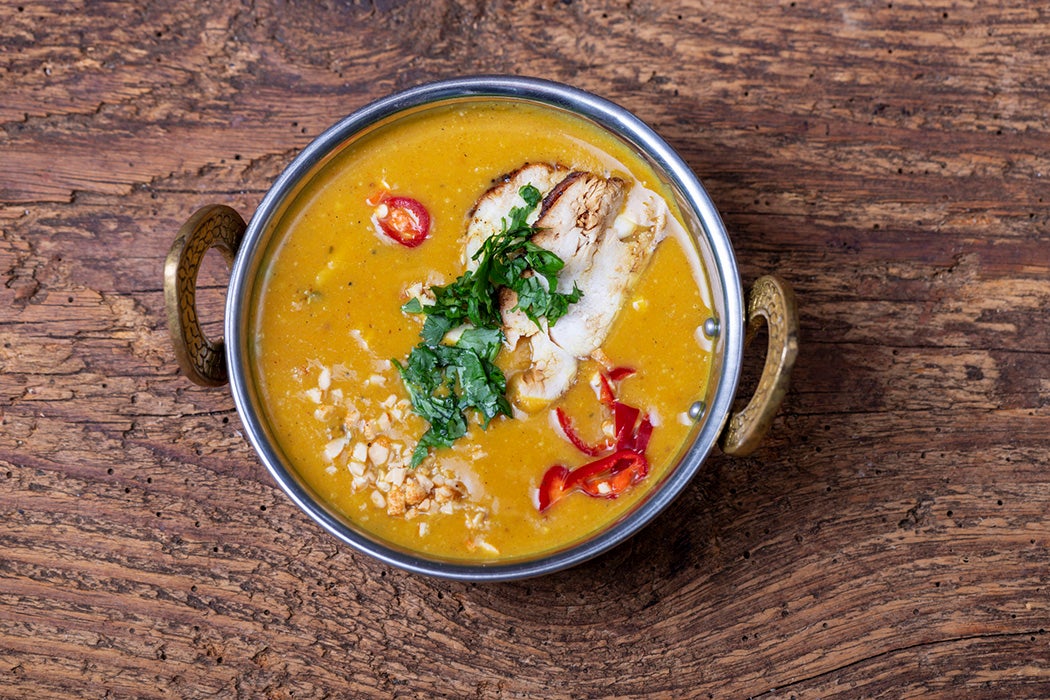Food traditions are always a mark of identity. And, for the British imperial project in India, a key food was mulligatawny soup, as Modhumita Roy, a literary scholar, explains.
Roy writes that the soup began as a simple South Indian broth called pepper water. Adapted for English palates, it quickly became a common dish among British administrators and merchants living in eighteenth-century India. The wealthiest members of this group ate extravagant everyday meals with what Roy describes as “an unmanageable hodgepodge of European and Indian dishes.”
But, over the course of the nineteenth century, Indian food became less common among these elites. British women living in India played a large role in that shift. Under Victorian norms, these elite wives, daughters, and mothers were responsible for maintaining households and personal manners distinguishing their families from lower-ranked British colonists and all Indians.
Roy writes that this attitude comes through in cookbooks aimed at British wives in India. Flora Annie Steele’s Complete Indian Housekeeper and Cook, published in 1888, focuses on European-style cooking, often using fashionable French names for dishes. It includes a brief and apparently reluctant discussion of mulligatawny. The author notes that she included a few “native dishes” due to reader demand.
“It may be mentioned incidentally that most native recipes are inordinately greasy and sweet and that your native cooks invariably know how to make them fairly well,” she added.
Elsewhere, she explained the importance of housewives’ attention to status issues in their menu choices: “We do not wish to advocate an unholy haughtiness, but an Indian household can no more be governed peacefully, without dignity and prestige, than an Indian Empire.”
Meanwhile, Roy writes, mulligatawny became increasingly popular back in England. An 1818 British cookbook, The Cook’s Oracle, described “Mullaga-tawny,” a newly invented soup with “the more familiar name of curry soup” as “a fashionable soup, and a great favourite with our East Indian friends.” The soup appealed to the English public for its versatility. Cooks could use expensive meats or just throw together a version to use up leftovers.
In 1845, Eliza Acton’s British cookbook Modern Cookery in All Its Branches included three recipes for mulligatawny soup. Notably, none of them are listed as foreign dishes. Acton takes pains to warn against heavy use of onions or garlic, since they are “very offensive to many eaters” and “it is only in coarse cookery that their flavour is allowed to strongly prevail.” She also includes instructions on buying and cooking rice—not a staple in Britain at the time—to accompany the soup.
Weekly Newsletter
Roy writes that mulligatawny fitted the needs of the growing, increasingly cosmopolitan English middle class. Recipes mixed familiar local foods like rabbit and thyme with items from around the world, like cinnamon, ground almond, and fenugreek.
If British elites in India had to take pains to highlight their European sophistication, their middle-class cousins back home had begun to find a different sort of status in consuming the products that colonialism brought back to them.
Support JSTOR Daily! Join our new membership program on Patreon today.







